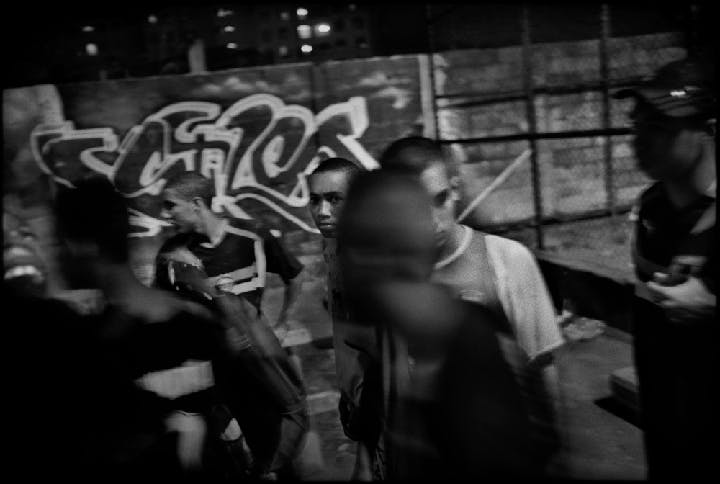What government? In Rio’s slums, drug gangs are the government.
– Carlo Massimo
The brutal violence in Brazil’s favelas takes various forms. It’s always a symptom of poverty. Sometimes, it’s a substitute for the state.
On the beach at Recife, a coastal city in the Brazilian state of Pernambuco, you will be told not to wear jewelry or carry expensive electronic devices. You will be told to avoid certain parts of town, like the favela of Coque, a notoriously violent shantytown.
It’s good advice. As recently as 2008, the homicide rate in Recife was 90.9 for every 100,000 residents. More people in this city were murdered, per capita, than in the entire country of El Salvador, whose homicide rate in 2008 was about 70 for every 100,000. America’s, by comparison, was five.
The warnings about flashy jewelry, exposed cell phones, and careless ATM visits are standard in much of Brazil for tourists and citizens alike. From wholesale massacres to minor necklace-snatching, Brazilian cities are awash in crime — but by whom?
A study in Latin American Politics and Society compared the crime in Recife with the crime in another notorious crime capital — Rio de Janeiro, whose favelas have long been ruled by drug gangs so powerful and so well-armed that they have been known to shoot police helicopters out of the sky. No such scenes unfold in Recife, where the firearm of choice seems to be the .38 pistol, and where drug traffickers cannot form anything like the entrenched, stable, para-states of Rio.
“In Rio de Janeiro,” one Recife man told the Associated Press, “the problem is organized crime. Here, the problem is disorganized crime.”
The difference in crime between the two cities is structural and historical. In Rio, drug traffickers form a kind of shadow government, engaged in a social contract with the citizens of their favelas. Brutal as they are — and they are brutal — Rio’s gangs deal in more than cocaine and sex; they provide subsidized electricity, repair roads, organize block parties, and feed hungry families in the slums they control, generally without sending a bill. Brazil’s government services are nowhere near as comprehensive, or as generous.
It’s a criminal culture that emerged long before the black economy in drugs and weapons took hold. Historically it was gambling — Brazil’s famous jogo de bicho lottery — that first bred Rio’s organized crime. The bicheiro gangs capitalized on the popularity of the game, and with the money they earned in running the numbers they began providing jobs and protection to the favela dwellers around them, guaranteeing a community of loyal clients, and thus, income. Even after the cocaine explosion of the 1980s, Rio’s gang violence looks more like the axe-handle politics of Boss Tweed’s New York, or Sicily at the height of Mafia power, than crack-era Oakland.
It’s an exchange of services. The traffickers need consumers, recruits, and compliant neighbors. The favelas need electricity and jobs. It’s hardly a surprise how well-entrenched the traffickers’ control of Rio’s favelas has become.
In Recife, on the other hand, there is no such exchange. That’s because Recife’s criminal caste never needed clients the way Rio’s did. In Recife, the criminals themselves were clients, a kind of bailiff class created by landowners and political bosses as hired muscle. Called capangas, these criminals policed the favelas on horseback, beating or murdering at their patrons’ behest, and often at their own. Despised by the masses, and dependent on their patrons for money, they never accrued the social or monetary capital to form anything as stable as the Rio crime syndicates.
In the 1990s, Recife’s capangas gave up political enforcement for the more lucrative business of drug trafficking. But they could never rely on a community to protect them on the witness stand or on the street, and could not raise the funds to buy the high-end weaponry that the Rio traffickers carry.
The study cites another reason as well for the difference between Rio and Recife: the police. It seems that strong-handed policing in the favelas leads people to support the traffickers, while a lenient police force gains sympathy. Rio’s police are notorious for their brutality. A recent Amnesty International report found that the police have killed 1,500 Cariocas since 2010, almost always without any subsequent investigation. The victims have largely been favela dwellers, overwhelmingly young, poor, and black. These grim statistics, as well as the omnipresence of masked, militarized policemen during the 2014 World Cup, have turned much of Rio’s poor against the government, and toward the shadow government of the traffickers.
In Recife, the police have not been militarized, which means that not only is there no arms race between traffickers and police, but that the terrifying image of ski-masked state murderers has much less purchase than in Rio. The Recife police not especially well-liked, especially since many officers indulge in crime or join clandestine death squads when out of uniform. But the institution, qua institution, is not nearly as feared or hated. In the favelas, people still maintain a cautious degree of trust toward the police.
There’s considerably more caution than trust, though, especially for the families of the slain.
* * *
Further reading:
Michael Jerome Wolff, “Building Criminal Authority: A Comparative Analysis of Drug Gangs in Rio de Janeiro and Recife,” Latin American Politics and Society 27.2 (2015)
Photo courtesy of Flickr/Balazs Gardi
